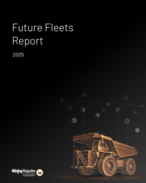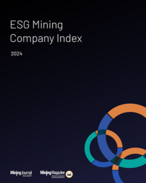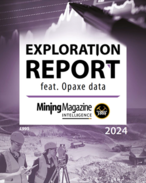This article is 12 years old. Images might not display.
One place to see a flock of “mining turkeys” in full gobble is the Western Australian mining centre of Kalgoorlie where this week several thousand of them have gathered for the annual Diggers and Dealers forum.
Collectively, the turkeys in Kalgoorlie should produce enough of their own breeze, in the form of hot air, to convince themselves they can still fly.
But for the best example of turkeys coming back to earth, after a few glorious years of pretending, you have to look in a different place – in the boardrooms of the world’s biggest mining companies.
Senior managers at Rio Tinto, Anglo American, Xstrata and BHP Billiton have convinced themselves and many outside observers that they were solely responsible for generating fat profits during the boom.
The problem with that claim is when the breeze of high commodity prices stops blowing you cannot reverse the argument and blame external forces for falling profits and asset-value write-downs.
That, unfortunately, is what BHP Billiton tried to do last week when it reported a $3.3 billion write-down in the value of assets in its nickel and US shale-gas operations.
Too little, too late, is Dryblower’ assessment of the write-downs, with shareholders likely to see more of their money trashed over the next few years as BHP Billiton retreats into a period of deep self-assessment that invariably ends with the departure of the chief executive officer.
The fact that Marius Kloppers has kept his job as CEO at BHP Billiton is a reason the company did not cut harder and deeper into a balance sheet inflated by values generated during the turkey-flying phase of the boom.
To have written off $10 billion or more in one sitting (the amount which will ultimately be required) would have been too much in one hit and far too much for the board to have done and still retain the services of Kloppers.
All that happened last week was the beginning of the end of a boom-time career of a man who has actually delivered surprisingly little to the shareholders of the company he runs, or the mining industry in general.
Virtually everything achieved during Kloppers’ tenure is the result of high commodity prices during a prolonged upward trend in a cycle of supply and demand that always turns.
Kloppers is not alone in falling for the nonsense of commodity prices staying high forever thanks to Chinese demand.
Australian Treasurer Wayne Swan is just as guilty, with his “write-down moment” due to arrive soon when he is forced to rework his budget, factoring in lower revenue – and perhaps no revenue – from the deeply disliked super-tax on profits from coal and iron ore mining.
If there is something amusing about the process through which we will now pass it is that the fate of two men from opposite sides of the spectrum will be sealed by the same event, a return to commodity-price normality.
Swan’s crash landing will be the most enjoyable to watch, not just because he has been so offensive in abusing the mining industry, more because of the terrible mistakes he has made in basing a budget on incorrect assumptions and on the wrong tax-point.
At some stage, even Swan will understand why state governments “tax” miners at the revenue line with royalties that peel off the government’s take at the mine gate, leaving the miner to make as much profit as he can – or incur the losses that come when prices fall.
The mistakes Kloppers made are slightly different but they were also very predictable and were predicted by old-timers, such as Dryblower, who could see the company was heading for a crash landing more than a year ago when it overpaid for assets and refused to address its out-of-control Australian costs.
Anyone who really understands mining knows that the only factor you can ever control is cost because the price of what you produce is dictated by the global market – and that means always managing costs to avoid the sort of crisis now washing over BHP Billiton.
But, rather than control costs, Kloppers and his team cocooned themselves with self-generated forecasts they had to believe – because they made them.
Contact with the outside world was minimised.
Anyone who questioned the wisdom of head office was deemed to be irrelevant (or an enemy).
Investment bankers and media analysts who expressed doubts about the company’s investment strategy were sidelined.
So, when the wind of high commodity prices stopped blowing, everyone came back to earth, with a thud.
This article first appeared in ILN's sister publication MiningNews.net.























